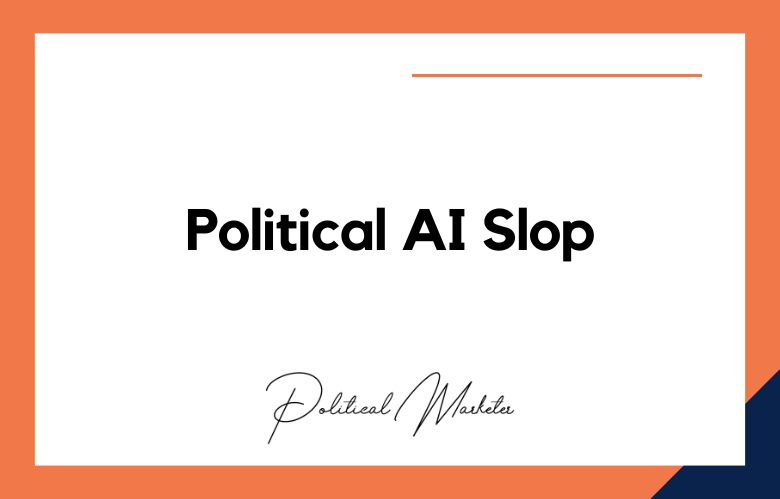Voter-based marketing (VBM) is a data-driven approach to political campaigning that involves targeting specific voter segments with tailored messaging and outreach efforts. By leveraging advanced data analytics and machine learning techniques, political campaigns can develop more effective and targeted marketing strategies that resonate with specific voter groups.
Here are some key strategies for implementing VBM in political campaigns:
Voter-Based Marketing (VBM) for Political Campaigns: Strategies for Targeted Success
Voter-Based Marketing (VBM) is an innovative and data-driven approach to political campaigning that leverages advanced analytics and machine learning to identify and target specific voter segments.
By analyzing large datasets containing information on voters’ demographics, behavior, preferences, and more, campaigns can develop targeted marketing strategies that resonate with specific voter segments, increasing engagement, maximizing the return on investment, and driving electoral success.
VBM offers several advantages over traditional methods of voter segmentation. First, it enables campaigns to create personalized messaging that resonates with specific voter groups, increasing engagement and voter turnout. Second, by analyzing large datasets, campaigns can identify patterns and insights that may not be apparent through traditional methods, leading to a more effective allocation of resources.
Collect and Analyze Voter Data
Collect a large dataset on voters’ demographics, behavior, preferences, and more. Use advanced data analytics and machine learning techniques to analyze the data and identify patterns and insights that can inform targeted marketing strategies.
Develop Voter Segments
Use the insights gained from the data analysis to segment voters into different groups based on shared characteristics. This can help campaigns understand the different voter segments and develop targeted marketing strategies.
Create Tailored Messaging
Develop tailored messaging and outreach efforts that resonate with specific voter segments. This can include targeted advertising, canvassing, outreach efforts, and other forms of political communication.
Monitor and Adjust
Monitor the effectiveness of the targeted marketing strategies and adjust them as necessary. This can help campaigns refine their approach and ensure they reach the right audience with the right message.
Engage with Voters
Engage with voters through targeted messaging and outreach efforts. This can help campaigns build relationships with voters, increase turnout, and win support for their candidate or cause.
By leveraging voter-based marketing strategies, political campaigns can develop more effective and targeted marketing efforts that resonate with specific voter segments and drive greater engagement and electoral success.
The Power of the Polls: How Voter-Based Marketing Can Secure Political Success
In today’s data-driven world, political campaigns increasingly leverage advanced analytics and machine learning to identify and target specific voter segments. This approach, known as voter-based marketing (VBM), offers a powerful new way to engage voters and achieve electoral success.
At the heart of VBM is collecting and analyzing large datasets containing information on voters’ demographics, behavior, preferences, and more. Machine learning algorithms are then used to identify patterns and insights in this data, enabling campaigns to segment voters into different groups based on shared characteristics.
Once these voter segments have been identified, campaigns can develop targeted marketing strategies that resonate with specific voter groups. This can include targeted advertising, canvassing, outreach efforts, and other forms of political communication. By tailoring their messaging to each voter segment’s particular needs and interests, campaigns can increase engagement and voter turnout, ultimately driving tremendous electoral success.
Democracy at Its Finest: Harnessing Voter-Based Marketing for Political Campaigns
Democracy is built on the principle of representation, with elected officials tasked with reflecting the will and interests of their constituents. In a world where information is abundant and easily accessible, it has become increasingly important for political campaigns to understand the needs and preferences of their target audience. This is where voter-based marketing comes into play.
Voter-based marketing (VBM) involves using advanced analytics and machine learning to analyze large datasets on voters’ demographics, behavior, preferences, and more. By identifying patterns in this data, campaigns can segment voters into groups based on shared characteristics, enabling them to tailor their messaging and outreach efforts to specific voter segments.
Unlocking the Key to Electoral Victory: Voter-Based Marketing in Political Campaigns
Winning an election requires more than a compelling message; it requires a deep understanding of the electorate and the ability to engage with specific voter segments. This is where voter-based marketing (VBM) comes into play.
By harnessing the power of advanced analytics and machine learning, campaigns can analyze large datasets containing information on voters’ demographics, behavior, preferences, and more. By identifying patterns in this data, campaigns can segment voters into groups based on shared characteristics, enabling them to tailor their messaging and outreach efforts to specific voter segments.
Campaigning in the Digital Age: Maximizing Success through Voter-Based Marketing
Political campaigning has evolved significantly in recent years, with the rise of digital technologies transforming how campaigns reach and engage with voters. One of the most innovative and effective emerging strategies in this new era is voter-based marketing (VBM), which leverages advanced analytics and machine learning to target specific voter segments with tailored messaging and outreach efforts.
VBM is a data-driven approach that analyzes large datasets containing information on voters’ demographics, behavior, preferences, and more. By identifying patterns in this data, campaigns can segment voters into groups based on shared characteristics, enabling them to tailor their messaging and outreach efforts to specific voter segments.
Targeting the Electorate: How Voter-Based Marketing Can Revolutionize Political Campaigns
Political campaigns have long relied on traditional methods of voter segmentation, such as broad demographic categories or past voting behavior, to develop their messaging and outreach strategies. However, with digital technologies and advanced analytics, campaigns can now leverage a new voter-based marketing (VBM) approach to understand better and engage with their target audience.
VBM involves analyzing large datasets on voters’ demographics, behavior, preferences, and more. By identifying patterns in this data, campaigns can segment voters into groups based on shared characteristics, enabling them to tailor their messaging and outreach efforts to specific voter segments.
From Ballot Box to Marketing Box: How Voter-Based Marketing Drives Political Success
The key to success in politics often lies in identifying and engaging with key voting blocs. Traditional methods of voter segmentation can only go so far, however, as they often rely on broad demographic categories or past voting behavior. This is where voter-based marketing (VBM) comes into play.
VBM is a data-driven approach to political campaigning that leverages advanced analytics and machine learning to identify and target specific voter segments. By analyzing large datasets containing information on voters’ demographics, behavior, preferences, and more, campaigns can segment voters into groups based on shared characteristics, enabling them to tailor their messaging and outreach efforts to specific voter segments.
Conclusion
Voter-Based Marketing (VBM) is an innovative approach to political campaigning that leverages advanced data analytics and machine learning to identify and target specific voter segments. By segmenting voters based on shared characteristics and developing targeted marketing strategies, campaigns can increase engagement, maximize the return on investment, and achieve tremendous electoral success.
At its core, VBM collects and analyzes large datasets containing information on voters’ demographics, behavior, preferences, and more. Machine learning algorithms are then used to identify patterns and insights in this data, enabling campaigns to segment voters into different groups based on shared characteristics.
Once these voter segments have been identified, campaigns can develop targeted marketing strategies that resonate with specific voter groups. This can include targeted advertising, canvassing, outreach efforts, and other forms of political communication. By tailoring their messaging to each voter segment’s particular needs and interests, campaigns can increase engagement and voter turnout, ultimately driving tremendous electoral success.
Call: +91 9848321284
Email: [email protected]
Voter-Based Marketing (VBM) for Political Campaigns: Strategies for Targeted Success – FAQs
What Is Voter-Based Marketing In Political Campaigns?
Voter-Based Marketing (VBM) is a strategy where campaigns use voter data to personalize messages, outreach, and engagement based on specific voter preferences, behavior, and demographics.
How Is VBM Different From Traditional Political Marketing?
Unlike traditional mass marketing, VBM focuses on micro-targeting individual voters using data insights rather than one-size-fits-all messaging.
Why Is Voter Data Critical For VBM?
Accurate voter data allows campaigns to segment audiences, personalize outreach, and improve conversion rates by focusing on relevant issues.
What Are The Key Components Of VBM?
Key components include voter segmentation, behavioral analysis, data collection, issue alignment, personalized messaging, and feedback loops.
How Does Micro-Targeting Work In VBM?
Micro-targeting identifies small voter groups with shared characteristics and tailors messages to their specific needs or values.
What Data Sources Are Used For VBM?
Sources include voter rolls, census data, social media activity, location data, CRM systems, surveys, and issue-based databases.
Is VBM Used Only During Election Time?
No. VBM is effective throughout the political cycle, including during issue advocacy, fundraising, reputation building, and governance communication.
What Role Does Psychographic Data Play In VBM?
Psychographic data helps campaigns understand voter attitudes, interests, and lifestyle, which allows for emotional and psychological alignment in messaging.
Can VBM Improve Voter Turnout?
Yes. Personalized outreach can motivate apathetic or undecided voters to participate by addressing their unique concerns and interests.
How Is Messaging Personalized In VBM?
Messages are adapted based on the voter’s location, past behavior, interests, and issue preferences to feel more relevant and authentic.
What Technologies Power VBM Strategies?
Technologies include AI-driven analytics, customer data platforms (CDPs), programmatic advertising, CRM tools, and campaign management software.
How Do Political Parties Use VBM For Fundraising?
VBM helps identify high-propensity donors and customize donation appeals based on giving history, interests, and campaign goals.
What Is The Role Of A/B Testing In VBM?
A/B testing allows campaigns to compare versions of messages or creatives to determine which approach yields better results among different voter segments.
How Can VBM Help In Crisis Management?
In a crisis, VBM enables rapid, targeted communication to reassure key voter groups and manage public perception proactively.
What Are The Ethical Concerns Around VBM?
Concerns include voter data privacy, informed consent, potential manipulation, and lack of transparency in targeting methods.
Is VBM Effective In Rural Or Low-Tech Areas?
Yes. While digital tools enhance VBM, it can also be applied through ground-level surveys, SMS outreach, call centers, and regional media.
Can VBM Be Integrated With Social Media Campaigns?
Absolutely. Social media platforms allow for granular targeting based on user behavior, making them ideal for VBM implementation.
What Is Voter Segmentation And Why Does It Matter?
Voter segmentation divides the electorate into groups based on factors like demographics, geography, behavior, and opinions for precise targeting.
Does VBM Work In Multi-Party Democracies Like India?
Yes. In fragmented electorates, VBM allows parties to carve niche support bases and avoid wasting resources on low-probability voters.
How Do You Measure The ROI Of VBM?
ROI is measured by tracking voter conversion, turnout rates, engagement metrics, donation performance, and message response effectiveness.










